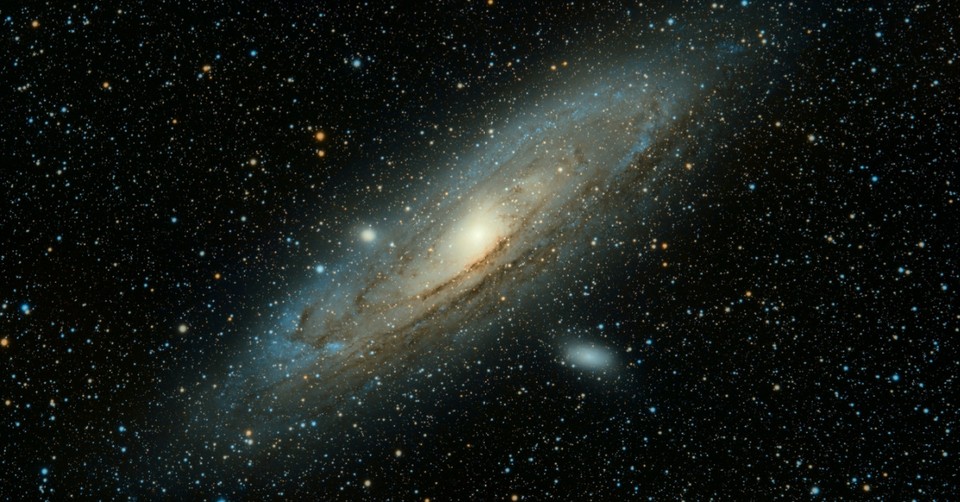NASA’s Asteroid Mission Just Undermined a Popular Atheist Theory

The reporting was almost breathless. Analyses of samples harvested by NASA’s OSIRIS-Rex mission from the asteroid named Bennu contained some of the amino acids crucial to life on Earth along with nucleobases comprising genetic code. From this, near-breathless headlines suggesting that the beginnings of life probably came to Earth from asteroids, and thus the high probability that intelligent life could exist elsewhere in our universe filled news feeds.
Except that’s not what Bennu actually suggests. In reality, the findings cast doubt on the long-held theory that life’s ingredients arrived piggy-backed on asteroids.
Why? Because of something known in scientific circles as “left-handed chirality.” The amino acids found on Bennu were made of an equal proportion of the molecule and its mirror-image structure (think right- and left-handedness). Not so with Earth’s amino acids. They mostly consist of just one side of that mirror image, something known as left-handed chirality. Thus, casting extreme doubt that the ingredients for life arrived on asteroids (for a short introduction to all things “chiral,” see the link to a video in the Sources below.).
So, the beginning of life remains, to a purely naturalistic mind, a mystery. You see, you can’t just say life exists because 3.8 billion years ago it began evolving from single-celled prokaryotic cells. Evolutionary theorists must ask how those first bacteria came to life.
It’s a profound question: How did life come from non-life?
You can say that within chemically rich liquid oceans, organic molecules transitioned to self-replicating life, but that’s like saying your SUV became Optimus Prime after it went through a carwash.
It doesn’t just happen.
So, what is the leading theory of how this all evolved outside of a God working in and through it? One of the leading theories for the origin of life is called panspermia—the idea that the first life, along with the beginning complexity, was seeded here from another planet, such as Mars. Many hoped evidence of panspermia would be found once the material brought back from Bennu was analyzed.
Bennu didn’t prove that. It actually threw more than a bit of cold water on the idea.
But let’s say Bennu did prove it. Let’s say we found the bacteria needed for life to begin evolving.
Do you know what that would solve?
Nothing.
If all the scientific challenges surrounding life beginning on its own on Earth attempt to be solved by saying life began somewhere else and got here on the back of a meteorite,
... then how did that life start there?
You have the exact same set of questions.
So perhaps we need to remind ourselves of the conclusion of Robert Jastrow, who for 20 years was the Director of NASA’s Goddard Institute for Space Studies:
“For the scientist who has lived by his faith in the power of reason, the story ends like a bad dream. He has scaled the mountains of ignorance; he is about to conquer the highest peak; as he pulls himself over the final rock, he is greeted by a band of theologians who have been sitting there for centuries.”
James Emery White
Sources
“Traces of Ancient Brine Discovered on the Asteroid Bennu Contain Minerals Crucial to Life,” Smithsonian, January 29, 2025, read online.
Doyle Rice, “Scientists Find a ‘Next Step on a Pathway to Life’ in Space,” USA Today, January 29, 2025, read online.
Sal Khan, “Introduction to Chirality,” Khan Academy, watch online.
Steve Koppes, “The Origin of Life on Earth, explained,” UChicago News, September 19, 2022, read online.
Marcia Dunn, “Are We All Aliens? NASA’s Returned Asteroid Samples Hold the Ingredients of Life from a Watery World,” AP News, January 29, 2025, read online.
Robert Jastrow, God, and the Astronomers.
Photo Courtesy: ©Guillermo Ferla/Unsplash
Published Date: February 3, 2025
James Emery White is the founding and senior pastor of Mecklenburg Community Church in Charlotte, NC, and a former professor of theology and culture at Gordon-Conwell Theological Seminary, where he also served as their fourth president. His latest book, Hybrid Church: Rethinking the Church for a Post-Christian Digital Age, is now available on Amazon or from your favorite bookseller. To enjoy a free subscription to the Church & Culture blog, visit churchandculture.org where you can view past blogs in our archive, read the latest church and culture news from around the world, and listen to the Church & Culture Podcast. Follow Dr. White on X, Facebook, and Instagram at @JamesEmeryWhite.
Originally published February 03, 2025.





